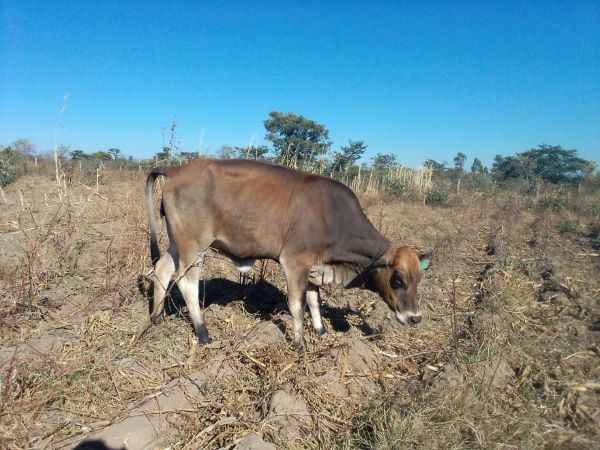To save the cattle population threatened by the respiratory Contagious Bovine Pleuropneumonia (CBPP), Zambia slaughtered over 11,000 herds of cattle as the disease threatens the country’s livestock sector.
According to Acting director for veterinary services, Godfrey Munika, the exercise which cost the country K7.2 million has been undertaken in Chibombo and Chisamba in the last quarter after symptoms were noticed and now remains with surveillance to ensure the threats did not recur.
“All the infected animals have been slaughtered completely and what we are doing now is surveillance just to make sure that no infected animals have been left out,” he is cited by News Diggers, a local daily, as saying.
The Government has stepped across the country to ensure surveillance was stepped up against CBPP before the Government lifts the ban on the movement of livestock across the country because of the various diseases that are prevalent in one area from being transposed elsewhere.
Mr. Munika disclosed that the Veterinary department has stepped up efforts to ensure that the prevailing and highly infectious swine fever in Southern Province-prevalent in free-roaming pigs is eradicated as the Government grapples with the disease which has affected the pigs and other animals.
“We are currently grappling with the African Swine Fever in Southern Province and unfortunately it is occurring in free roaming pigs which we need to tame,” he adds.
Last week, Zambeef announced it had slaughtered over 8,000 herds of cattle after it contracted CBPP at its Huntley farm in Chisamba to avert the spread of the disease.
Its chief executive officer, Faith Mukutu said the country’s leading integrated cold chain food products and agribusiness company and one of the largest in the Southern Africa region, has since stepped up vigilance to ensure CBPP and other diseases were contained to save the animals, one of their major export products.
After noticing the recurrence of CBPP cases, it had sought the indulgence of the Ministry of Fisheries and Livestock’s Veterinary Department, to help curb a recent outbreak of CBPP.
“Zambeef notified authorities when we suspected cases of the disease. After tests were carried out at Huntley and the presence of the disease was confirmed, we were directed by the government to slaughter all animals at the farm to prevent its spread,” Ms. Mukutu said.
The slaughtering of the infected animals as its outlet follows a government directive from the Government.
The company has further implemented additional measures including enhanced biosecurity and vehicle spray races to contain not only CBPP and other diseases in addition to surveillance between provinces where it has outlets to monitor animal movements, one of the famous transmissions lines and ensure certainty of ‘disease free’ livestock.
“Some other measures that need to be put in place include constant surveillance between the provinces in terms of animal movements, and 100 percent testing for diseases such as CBPP, Foot and Mouth Disease and East Coast Fever.”
Zambeef is involved in the primary production, processing, distribution and retailing of beef, chicken, pork, eggs, dairy, fish, flour, stock feed and day-old chicks throughout Zambia and the surrounding region. It operates 236 retail outlets in Zambia, Nigeria and Ghana.
Zambeef has one of the largest row cropping operations in Zambia, growing maize, soybeans and wheat. Zambeef plants nearly 23,000 hectares annually, with most of the resulting crops being used in the Zambeef animal feed and flour milling businesses.
Recently, Minister of Livestock and Fisheries Makozo Chikote commended livestock stakeholders for joining hands in resolving the CBPP outbreak in the two areas to avert future outbreaks.
He noted that the disease, with similar occurrences and mortality rate of up to 50%, is a cost on the economy if not redressed promptly.
“I wish to commend all of you esteemed stakeholders for joining hands with the government in brainstorming on measures that will help address the CBPP outbreak in Chisamba and Chibombo”
Finance minister, Dr. Situmbeko Musokotwane in his 2023 national budget realizing the essence of promoting the agriculture fisheries and livestock sector allocated a staggering K11.2 billion US$681 million on various interventions in the agriculture, fisheries and livestock sub-sectors in line with the Comprehensive Agriculture Support Programme (CASP).
The Programme will provide farming inputs, enhance extension services, improve market access, financing to farmers and develop irrigation systems.
A staggering K9.1 billion will be spent on farming inputs, K789.5 million for extension services including the procurement of motor bikes, extension kits, electronic tablets and rehabilitation of camp houses across the country.
A total K426.6 million will be spent on farm block development and irrigation to cut dependence on rain-fed agriculture and support agricultural activities all year round.
A further K52.7 million has been earmarked for the recruitment of at least 500 extension officers in the livestock, fisheries and agriculture sub-sectors. Another K274.4 million has been earmarked for use on animal disease control.
This will facilitate the procurement of animal vaccines as well as the construction of an animal vaccine plant at Balmoral in Chilanga District, Dr. Musokotwane stated in his K174 billion (US$10.1 billion) expenditure budget.
CBPP is a respiratory disease of cattle that is listed as notifiable by the World Organization for Animal Health. It is endemic in sub-Saharan Africa and causes important productivity losses due to the high mortality and morbidity rates.
CBPP is caused by Mycoplasma mycoides subsp. mycoides (Mmm) and is characterized by severe fibrinous bronchopneumonia and pleural effusion during the acute to subacute stages and by pulmonary sequestra in chronic cases.
Additional lesions can be detected in the kidneys and in the carpal and tarsal joints of calves. Mmm infection occurs through the inhalation of infected aerosol droplets.
After the colonization of bronchioles and alveoli, Mmm invades blood and lymphatic vessels and causes vasculitis. Moreover, Mmm can be occasionally demonstrated in blood and in a variety of other tissues.
In the lung, Mmm antigen is commonly detected on bronchiolar and alveolar epithelial cells, in lung phagocytic cells, within the wall of blood and lymphatic vessels, inside necrotic areas, and within tertiary lymphoid follicles.
Mmm antigen can also be present in the cytoplasm of macrophages within lymph node sinuses, in the germinal center of lymphoid follicles, in glomerular endothelial cells, and in renal tubules.
A complete pathological examination is of great value for a rapid presumptive diagnosis, but laboratory investigations are mandatory for definitive diagnosis.








